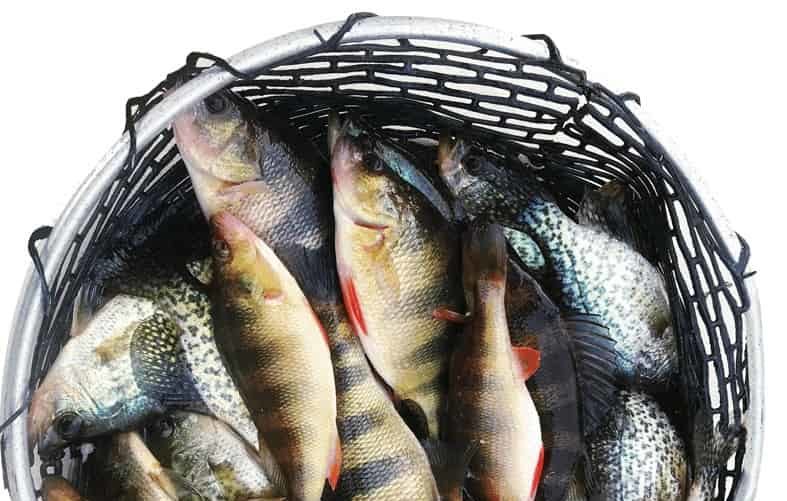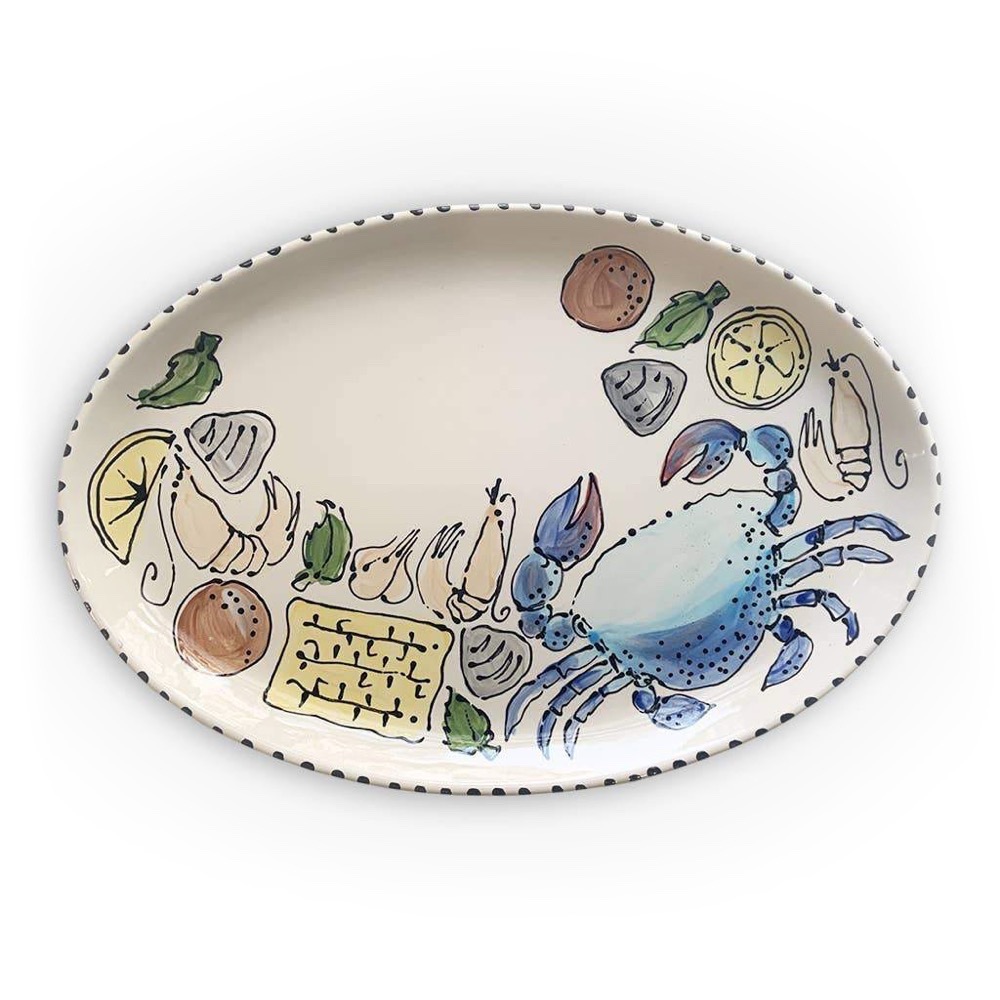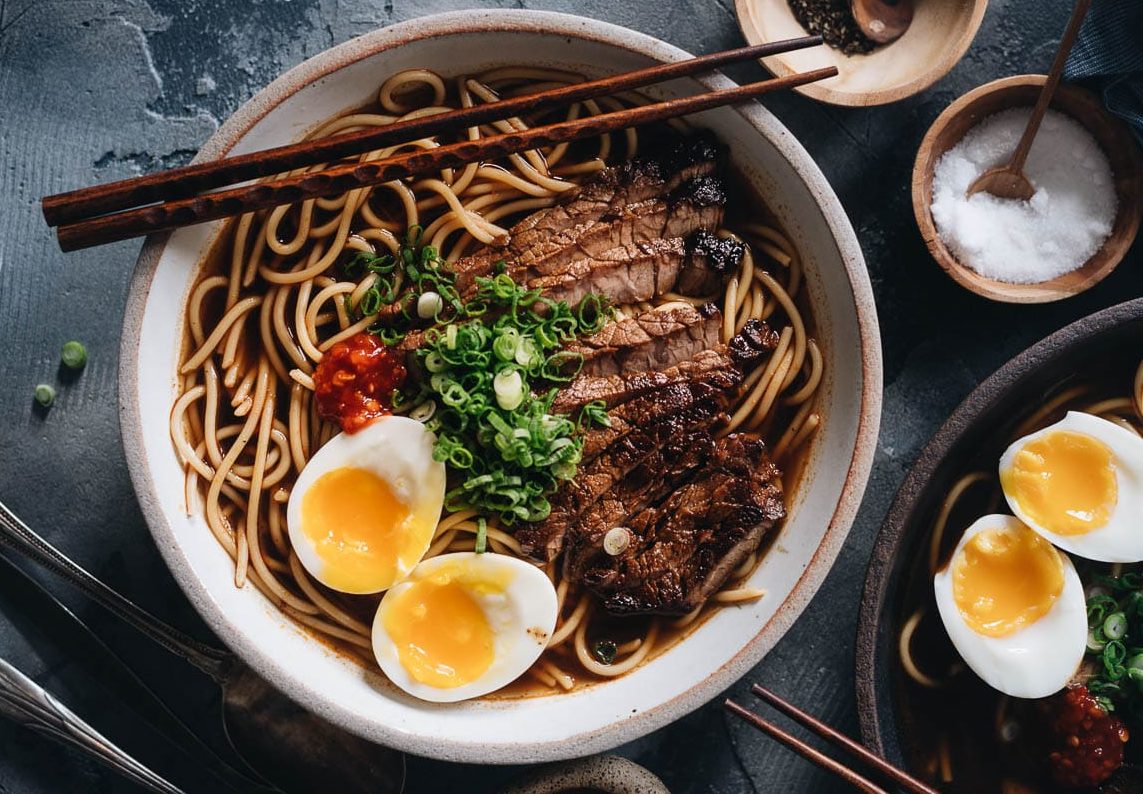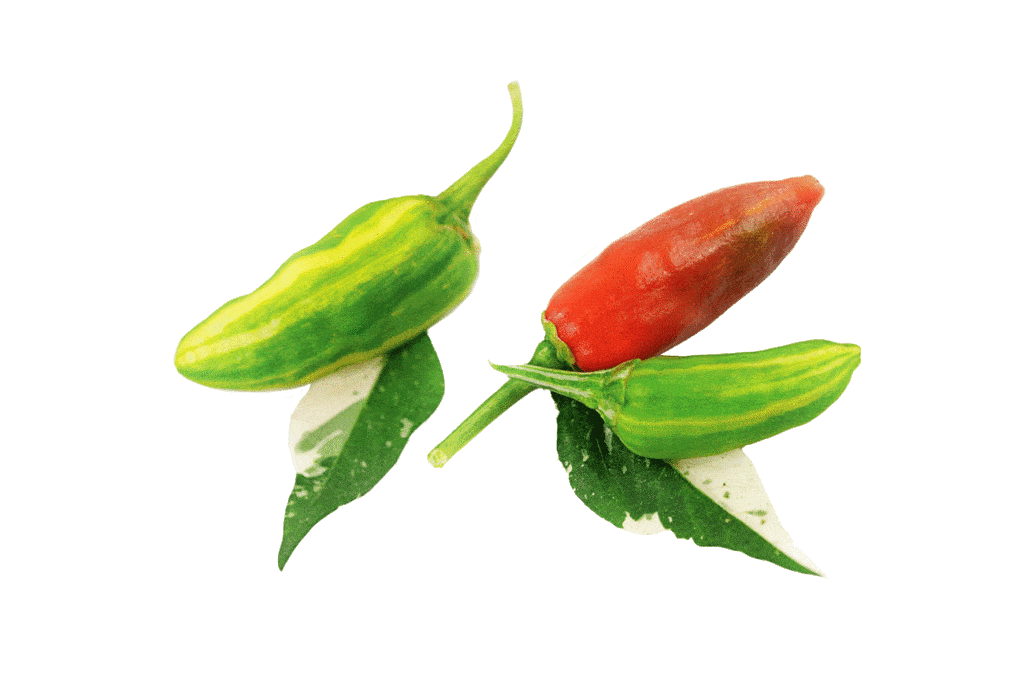
The Chesapeake chili makes a comeback.
Seafood is the stuff of the Chesapeake soul. As the Bay reaches back into the coastline, almost splitting the states in two, it has given Maryland and Virginia edible identities of blue crabs and bivalves—so much so, that a crustacean makes an appearance on my Maryland driver’s license, as integral a part of my personal records as my address and eye color. But over the past decade, a little hot pepper has discreetly emerged from near disappearance to become a new ambassador of Chesapeake history.
In the 1800s, home gardens in Baltimore’s African American community were brought to life with splashes of color—streaks of lime, burnt orange, and flame-red dangling from green- and white-splotched leaves—the fish pepper plant. Long before Old Bay became Baltimore’s trademark spice, the pepper lent its heat to seafood dishes that made the Chesapeake home to one of the world’s great cuisines.
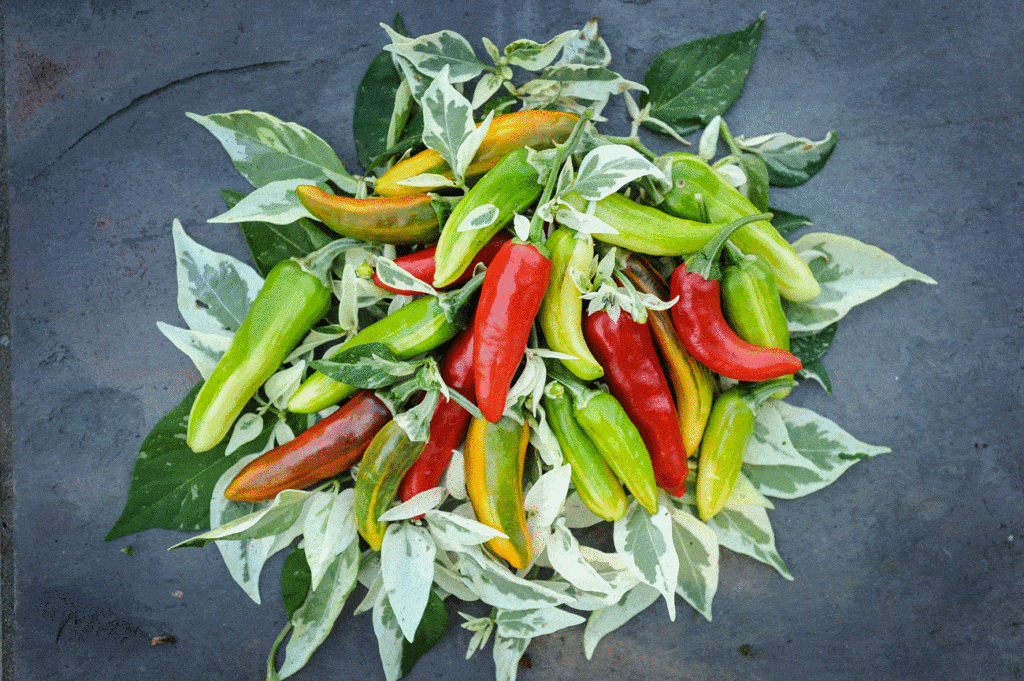
The symbiotic relationship between the fish pepper and local seafood eateries is what gave the plant its name. Before transitioning through a spectrum of bright colors, the chili starts off as a light-white pod, an effect from its recessive albino gene. Harvested at this mild, early stage, it added an invisible kick to cream-based seafood sauces and soup—the ultimate secret ingredient.
Try fish pepper sauce on an oyster, and the name will make even more sense. The chili’s heat and fruity flavor is a perfect complement to briny Bay offerings.
But how the pepper landed in the Mid-Atlantic is hard to pin down. No doubt, it was swept up in the sprawling trade networks between Africa, Europe, and the Americas leading up to the 1800s. Hot peppers originating from Mexico drifted to the Caribbean, where they were adopted by enslaved Africans and continued to migrate outwards in all directions.
Though it’s possible it made it onto a ship by accident, it’s easy to imagine how the fish pepper, with its beautiful, variegated leaves, would have stood out as a plant worth packing. Michael Twitty, culinary historian and author of the James Beard Award-winning book, The Cooking Gene, says there’s a good chance it was brought to the Chesapeake by Haitians around the time of the island’s revolution and soon appeared in kitchens as the immigrants went on to run Baltimore’s produce markets.
By the 1870s, the fish pepper was well established in African American home gardens throughout the Mid-Atlantic. As Twitty says, “People grew many different types of hot peppers in their yards, and for Black people in particular, it was not an option. It was a necessity.” Chilis like the fish pepper had deep ties to folklore and medicine; the fact that they made food sing was a bonus. Peppers were used to ease joint pain, get rid of digestive worms, and deter bugs from tobacco plants. Enslaved people seeking freedom would rub them on their feet, hoping to throw off the bloodhounds on their trails.
The home garden was also a powerful tool for making a better life. On plantations, vegetable patches were a way for the enslaved to earn money and maybe even freedom by selling produce to slaveholders. Heirloom plants like the fish pepper were at the heart of truck farming, a lifeline, especially for the large free Black population in the Baltimore area before the Civil War. As it grew, this network of growers and sellers became intertwined with a flourishing catering industry rooted in fresh local seafood and managed by family dynasties extending from Baltimore to Philadelphia.
The food coming from these kitchens was part of a vibrant Chesapeake cuisine that had evolved for years, guided by the ingenuity of the enslaved. Afro-Caribbean ingredients like the fish pepper combined with European and Native American traditions as cooks drew from one of the most fertile ecosystems on Earth. “The Chesapeake was the first major place of this triple Creole heritage,” says Twitty—a century ahead of legendary New Orleans, fifty years ahead of Charleston.
Cookbooks like Elizabeth Lea’s Domestic Cookery (1851), Mrs. Benjamin Otis Howard’s Fifty Years in a Maryland Kitchen (1873) and Harry Franklyn Hall’s 300 Ways to Cook and Serve Shellfish (1901) are a window into this world, featuring recipes like crab gumbo with okra, terrapin stew, and Baltimore oyster pie. Hall, a Black caterer from Philadelphia, calls for hot peppers in many of his recipes, but doesn’t specify the variety. In fact, the fish pepper actually isn’t named in any cookbooks of the time. It remained part of oral traditions, cradled by the Black community as its own.
The port city of Baltimore was the core of this thriving Chesapeake food culture, with lively public markets and emerging ethnic neighborhoods. (Baltimore was second only to New York for the numbers of immigrants it welcomed through its port in the 1800s). It’s said that Ralph Waldo Emerson declared the city’s celebrated Lexington Market to be “the gastronomic capital of the world.” At that time, up to 50,000 people would pass through the market on a single day.
But the scene went from bustling to bust as the waters of the Chesapeake suffered from overfishing and pollution towards the middle of the 20th century, shutting down many of the seafood houses lining the Bay. As cities grew denser and home gardens lost ground, the fish pepper fell into obscurity, gradually disappearing from menus.
That is, until William Woys Weaver stumbled upon some baby food jars stashed in his grandfather’s freezer. The jars held seeds of beautiful heritage plants, collected with an artist’s eye. Horace Pippin, a well-known Black painter in the Philadelphia area, had given them to Weaver’s grandfather in the 1940’s. Pippin suffered from injuries he sustained in World War I and turned to Weaver, a beekeeper, for relief, trading selections from his seed collection for honeybee stings that would ease his pain. One of these seeds was the fish pepper, and, in 1995, grandson Weaver shared them with the non-profit Seed Savers Exchange organization (seedsaver.org), bringing Pippin’s treasures into wider circulation.
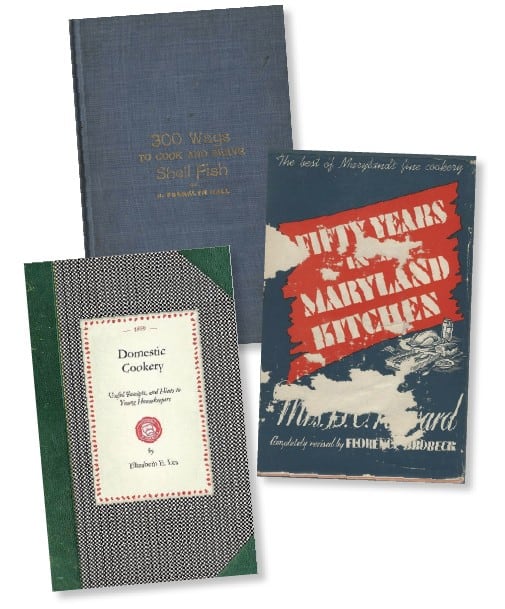
The chili began floating around again as contemporary chefs in the Mid-Atlantic region turned to local heritage plants for inspiration. Chief among them is Spike Gjerde, James Beard-Award-winning chef of Woodberry Kitchen, a Baltimore restaurant that sources food entirely from local growers. He learned of the fish pepper from Fighting Old Nep, a pamphlet about the foodways of enslaved Marylanders self-published by Twitty in 2006. “I look to the past for clues as to how we can be doing this thing that we do with local food,” Gjerde says. “The fact that there was a pepper that was grown around the Chesapeake that played a role in cooking here was one of those clues.”
Gjerde was looking for a way to create a hot sauce that the Chesapeake could call its own, the way Tabasco is associated with Louisiana. “When the fish pepper came along, that’s when it clicked.” To source the pepper, he built relationships with local growers like Denzel Mitchell, who started off with 15 fish pepper plants on a vacant lot in Baltimore. (Mitchell has since become deputy director of the Farm Alliance of Baltimore, an urban farming collective dedicated to resource-sharing and advocacy.)
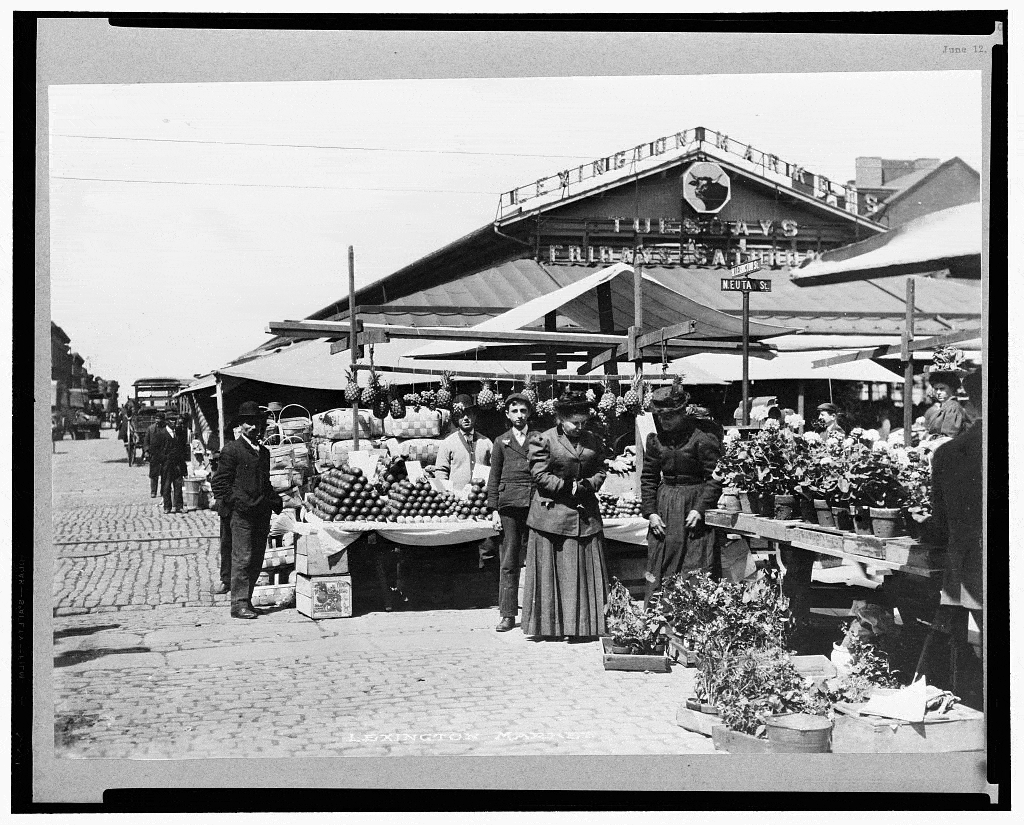
As Gjerde encouraged farmers to grow the pepper, a small handful the first year turned into a few bushels the next and eventually thousands of bottles of Snake Oil, a hot sauce now on every table at Woodberry Kitchen and sold online—snakeoilhotsauce.com.
The restaurant has also branched out to make a fish pepper-flake dry seasoning made from the pepper mash left over from fermenting Snake Oil. And the chili continues to pop up all over the menu, like a regional seal of approval, a through-line of flavor in dishes such as Tilghman Island Crab Pot, deviled eggs, and brussels sprouts with fish pepper honey and benne.
Xavier Brown, a D.C.-based urban farmer and founder of Soilful City, collaborates with other Black farmers in the area to grow fish peppers and makes a version of chili sauce he calls Pippin Sauce (available at Good Food Markets and Glen’s Garden Market in D.C.). It was the pepper’s layered stories that first spoke to Brown. “Growing up in D.C., it’s not too often that you’re able to get seeds that you can be directly tied to,” he says. “The fish pepper has opened my eyes to building up my own seed stock and wanting to grow more plants and get to that point of other people doing that as well, so we can trade, we can share, and there can be an abundance of seeds.” (Seeds from Soilful City’s fish pepper stock are available at trueloveseeds.com).
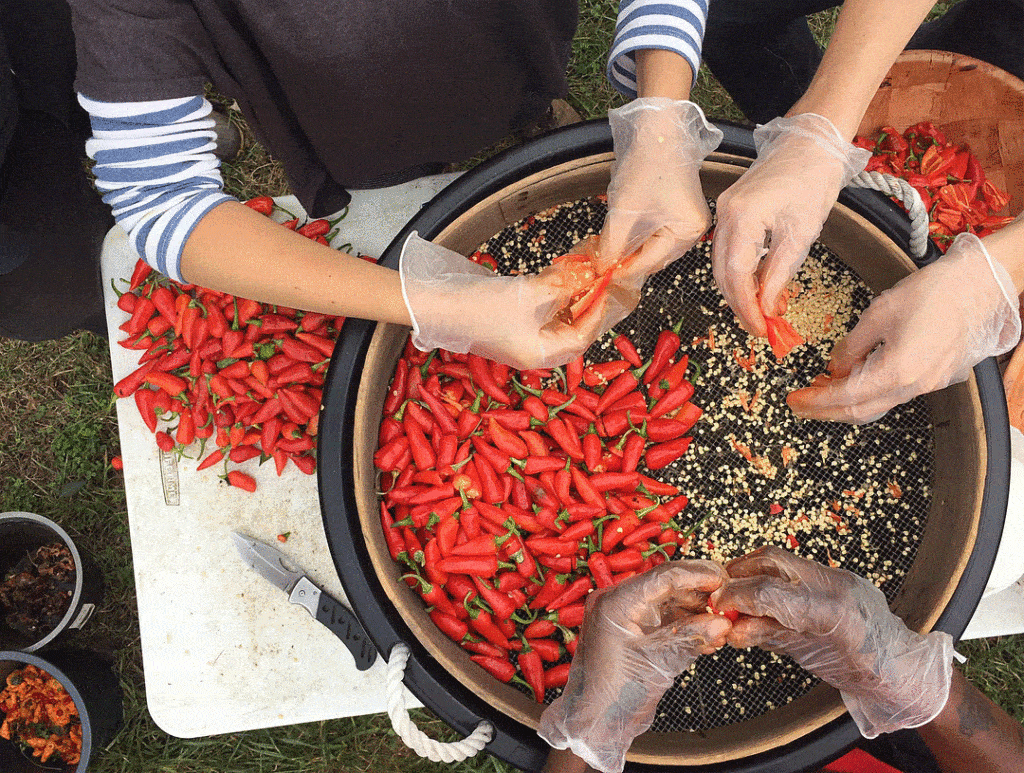
As people carve out more green space in cities, the pepper has become a part of an urban gardening renaissance, especially among Black growers who can connect to the pepper’s history. It’s a symbol of self-reliance, offering an opportunity to build a sense of identity, in addition to a business. “Definitely with descendants of the African Diaspora, there’s unresolved trauma with the land, our connection to it, our relationship to it,” Brown says. “Being able to reclaim our history and retell our narratives on our own terms, I think there’s a lot of healing in that.”
The pepper, and the stories it tells, are spreading throughout Baltimore, D.C., and down the Bay even to the Eastern Shore of Virginia. The plants thrive in the hot, humid Chesapeake summer, and they also grow well in containers. They’re now included in the SlowFood.org Ark of Taste, an international catalog listing heritage plants at risk of being endangered. More farms are planting the pepper to supply local restaurants, including sixth generation Baywater Farms, which works with Heirloom restaurant in Lewes, Delaware. Through school-garden initiatives in area public schools, the chili gives students hands-on history and gardening lessons. It’s become an important part of local community garden outreach, such as Soilful City’s work to engage formerly incarcerated individuals in urban farming.
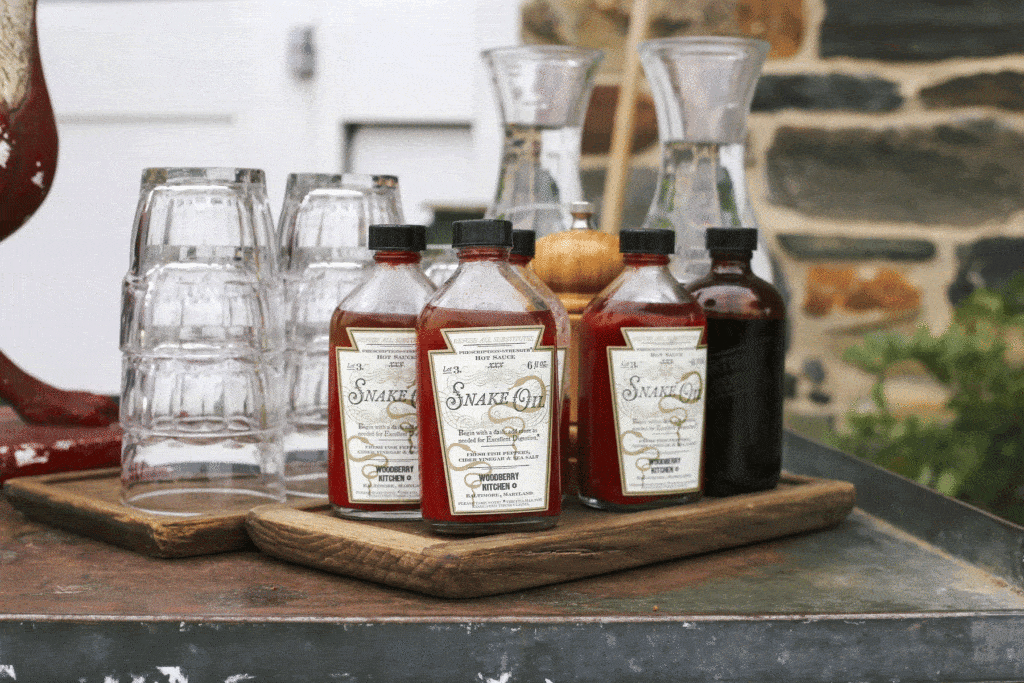
Museums are also incorporating the fish pepper into the wider historical narrative. It’s featured in the gardens at Colonial Williamsburg and Monticello as well as the Victory Garden at the Smithsonian National Museum of American History where it’s been growing for over ten years. Highlighting the role of the home garden in American history, the Victory Garden welcomes visitors from all over the world as they walk down the National Mall. Smithsonian horticulturalist Erin Clark says their vegetables usually change each year, but the fish pepper is a constant. “People always talk about it. It’s very popular on our tours,” she says. “It’s a great tool for education because it teaches people about the needs of people that came before. People always connect around food stories and plant stories.”
Over the past decade, the charismatic fish pepper has proven it’s not just a flavor of the month. It’s becoming a key ingredient in the Chesapeake kitchen, helping the region reclaim the recognition it deserves. It’s a driving force in the local urban gardening movement and a link between chefs and growers working to create a sustainable food system. It’s a tool for educating children and adults about history and the importance of saving heritage seeds. And, it’s a testament to the people who have kept its flavor alive throughout the centuries. “This is the actual, physical, moving, organic evidence of our presence,” says Twitty. “It’s part of who I am, part of who we are.”


Fish Pepper Tips
The pepper emerges as a creamy, white fruit with a mild flavor. As the pepper matures, it gains spiciness and takes on light-green stripes, which darken and then turns orange with dark brown striations. It reaches full maturity as a solid red pepper, about as hot as a jalapeño or mild cayenne (5,000 to 30,000 on the Scoville heat scale), and much less intense than a habanero.
Fish peppers are an excellent way to liven up seafood dishes. Cut one in half and throw it in a stew. Chop it up finely to give extra zing to a crab cake. Chef Gjerde even suggests treating it as you would a Szechuan pepper, using it whole in a stir-fry.
The fish pepper lends itself especially well to preserving. Try pickling or making your own pepper vinegar by pouring vinegar over the them in a bottle. The thin membrane makes it a great candidate for drying as well. Thread the peppers on a string to bring some of the beauty of the garden inside to dry.

